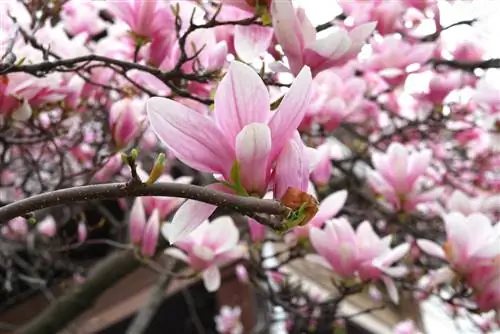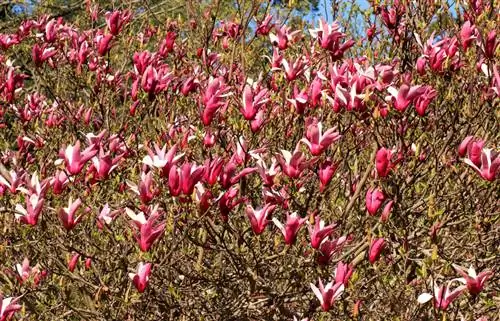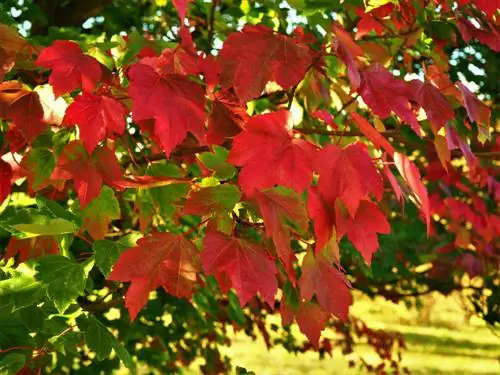- Author admin [email protected].
- Public 2023-12-16 16:46.
- Last modified 2025-01-23 11:20.
Beautiful and lush blooming magnolias are the adornment of every spring. All the better if you can enjoy this enchanting sight a second time - right?

Why does a magnolia bloom in August?
Some magnolias, such as the purple magnolia and the tulip magnolia, may experience a second bloom in August, especially after a mild and early spring. The summer magnolia “Magnolia sieboldii”, on the other hand, generally only blooms from July or August due to its late flowering phase.
Mild spring often results in a second bloom
Many gardening enthusiasts are surprised in July/August when they suddenly discover flowers on their magnolia. This second bloom often follows a fairly mild and early spring in which the plant bloomed particularly early. However, the August blossoms are often weaker than the spring blossoms, after all, the tree now has to invest additional energy in the development and supply of the leaves. Typically, a magnolia blooms before it develops leaves. However, summer flowering does not occur in all magnolia varieties; such behavior is only known from the purple magnolia and the tulip magnolia.
Summer magnolia doesn't bloom until July
There is also a relatively late-blooming type of magnolia that generally only blooms from July or August onwards: the summer magnolia “Magnolia sieboldii”, which is also called Siebold’s magnolia. This small, shrub-like tree grows up to 10 meters high and is deciduous. The species originally comes from Japan, but is also widespread in China and Korea. The species not only blooms late, but also has another special feature compared to other magnolias: the flowers only appear after the leaves have formed.
Tips & Tricks
The second flowering in summer cannot be forced, not even by radical pruning in autumn. Many a magnolia lover tries to force their favorites to bloom in this way - but usually fails miserably. In the worst case, the magnolia will not bloom at all the following year because it has to put too much energy into regeneration.






